
To see this image (and other excellent images by many other photographers), visit Monochromia.


To see this image (and other excellent images by many other photographers), visit Monochromia.
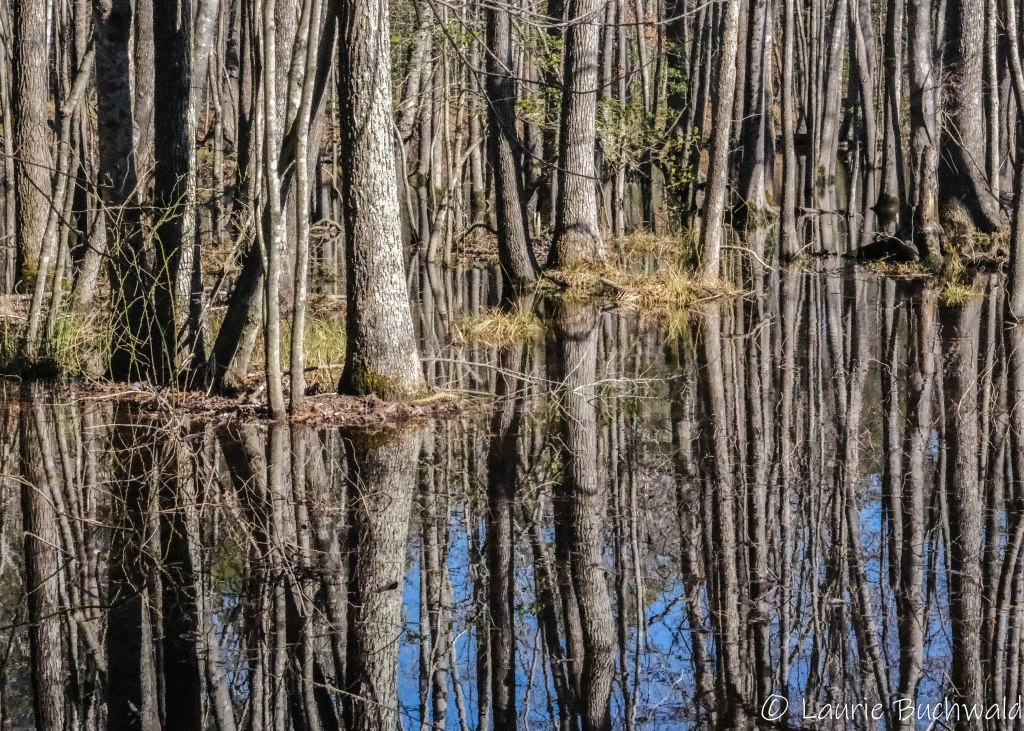
Before heading back to the mountains of Southwest Virginia, I took a short walk on the Virginia Capital Trail. The Cap Trail is a 51.7 multi-use, fully-paved trail that runs from the City of Richmond, Virginia to James City County, near Williamsburg, Virginia.
The goal is to add a 7 mile connector to the restored area of Colonial Williamsburg, as well as the College of William and Mary.

Part of the trail runs through a suburban wetland. Please follow the link for more information about the importance of preserving these spaces.


One of the most photographed sites along the Blue Ridge Parkway is Mabry Mill, a 1910 watermill run by the National Park Service and located at milepost 176.2. In addition to the Mill, there is a short trail around the mill which connects historical exhibits about life in rural Virginia. This day though … the tree stole the show!
Way back in November, when the Delta and Omicron variants were still wreaking havoc on the world, we made plans to see the Immersive Van Gogh Exhibit Nashville, hoping that it would be safe to attend by April. And it was! Being fully vaxxed and boosted, we set off on the 6 hour drive from Southwest Virginia to The Music City. “The Fisk Jubilee singers from Nashville’s Fisk University and Queen Victoria most often get the credit for the city’s nickname”, but it was about 50 years later, in the 1920s, as WSMs Grand Ole Opry gained popularity, that the nickname began to take hold.

We arrived in the early evening and went straight to Centennial Park. This 132-acre park features the iconic Parthenon, the world’s only exact-size and detail replica of the original temple in Athens, Greece. “When Tennessee celebrated its 100th year of statehood in 1897 with the Tennessee Centennial Exposition, Nashville took advantage of its nickname “Athens of the South” and built the Fine Art Building as a copy of Athens’ most famous building and the epitome of Greek classical architecture”

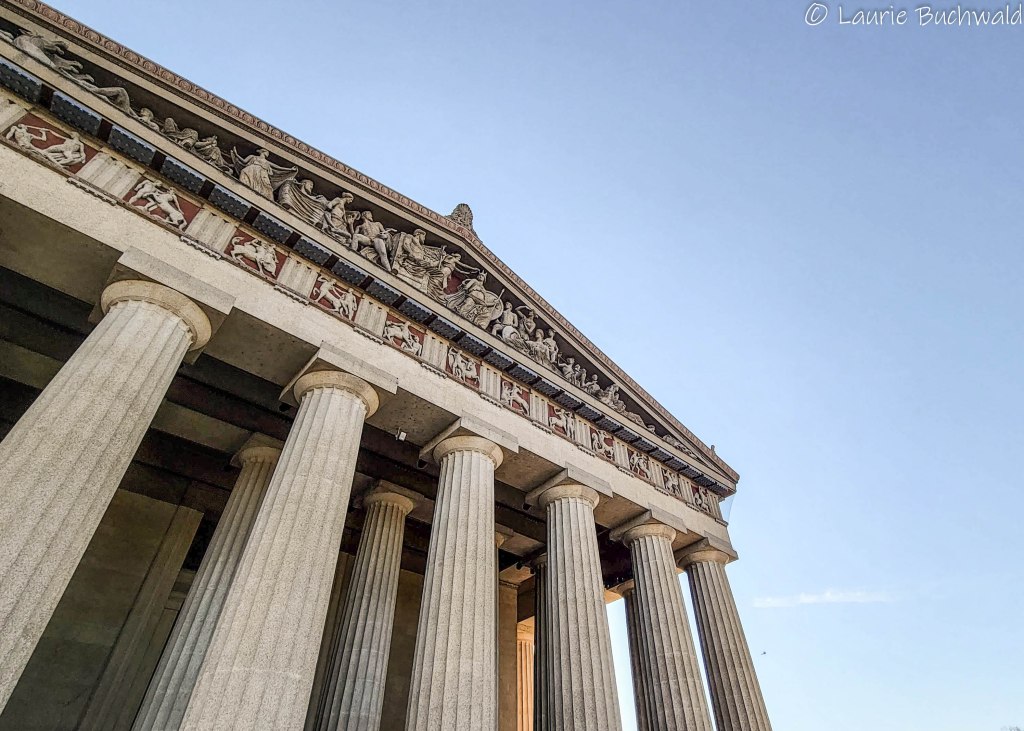


I’ve now seen the Parthenon twice but only from the outside. “Since the 1930s, the Parthenon has continued to host changing art exhibitions in its galleries and to educate both Nashvillians and visitors about the legacy of the ancient Greeks and their impact on American civilization”. Someday, I’ll plan the time to go inside and really learn the history and see the interior exhibits.

A very pleasant surprise, thanks to Greg, was finding the Tennessee Woman Suffrage Monument, also located in Centennial Park. Nashville artist Alan LeQuire created the monument which was dedicated in May of 2020, one hundred years after women gained the right to vote. The gorgeous monument depicts the 72-year suffrage struggle which culminated with victory. It is worth noting that less than 10% of all monuments throughout the US feature women.
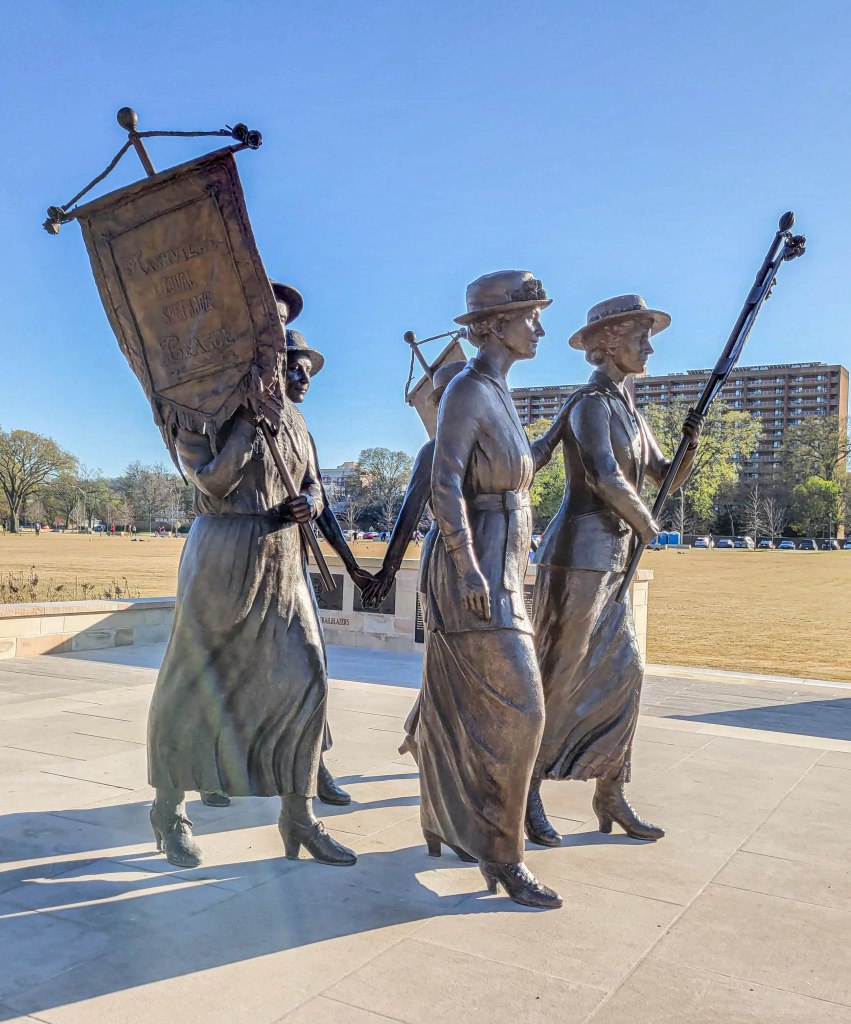


The next morning, we made our way to the event center to be immersed in Van Gogh. The exhibit was such a powerful and moving experience. Worth every penny spent and every mile traveled. Set to a wonderful selection of music, the video projection of the artist’s work revealed the talent and the tragedy. We were literally surrounded by Van Gogh’s art as you can see by the photo of our feet.
People walked around, sat on benches, or on the floor in identified, socially distanced spots. The patterns on the floor changed based on the work being shown at the time. 500,000 Cubic Feet Of Projections, 60,600 Frames Of Video, and 90,000,000 Pixels offers the opportunity to experience art in a new way, one that is welcoming to all. We watched the exhibit three times, moving around from space to space, seeing something different each time.
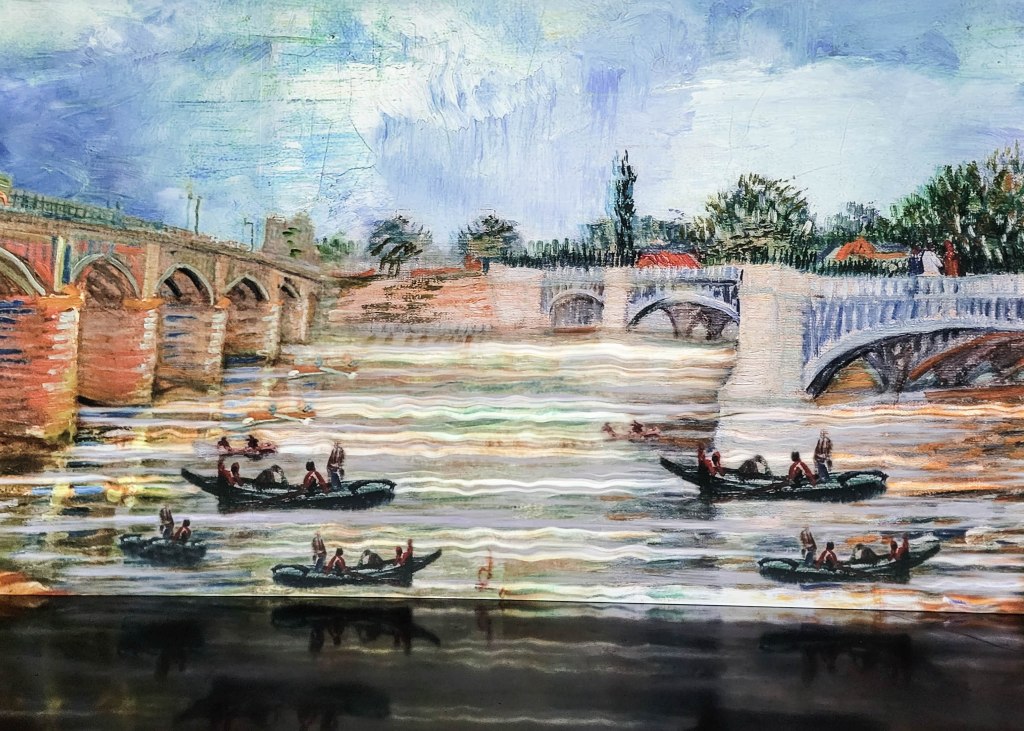






I’d love to hear from those of you who saw the exhibit in another city.

After lunch, we worked our way downtown to see the historic Ryman Auditorium. The words from the website are better than any I might write: This place is hallowed ground. This is the exact spot where bluegrass was born—where Johnny Cash met June Carter, where souls were saved and a slice of history was nearly lost. It was right here that country music found an audience beyond its own back porch, and countless careers took off as deals were signed on napkins and paper scraps backstage.
We took the self-guided tour – watched all the videos, read all the plaques, followed all the timelines. Greg bought me a Chocolate Moon Pie, which as it turns out, I did not enjoy, and even let me take a total tourist photo of him. If you are a lover of old country music, you know, before the “bro trend” as Reba calls it, you must visit!
“You know, ‘Hey bro, let’s go down to the river and catch some fish.’ And everybody’s ‘good ol’ boys’ and that’s the ‘bro music.’ I would really like it to get back to the real strong country. The country of Merle Haggard, Conway Twitty, Ronnie Milsap, Mel Tillis. I miss that kind of country.” – Reba McEntire






We spent the rest of the day exploring some of the downtown area. There is a six block segment of Broadway that has turned into a mini Vegas / New Orleans combo. Lot’s of partying in the streets, bar after bar filled with music and people, and many a party bus going by. Nashville has evidently become the “go to” destination for batchelorette weekends.
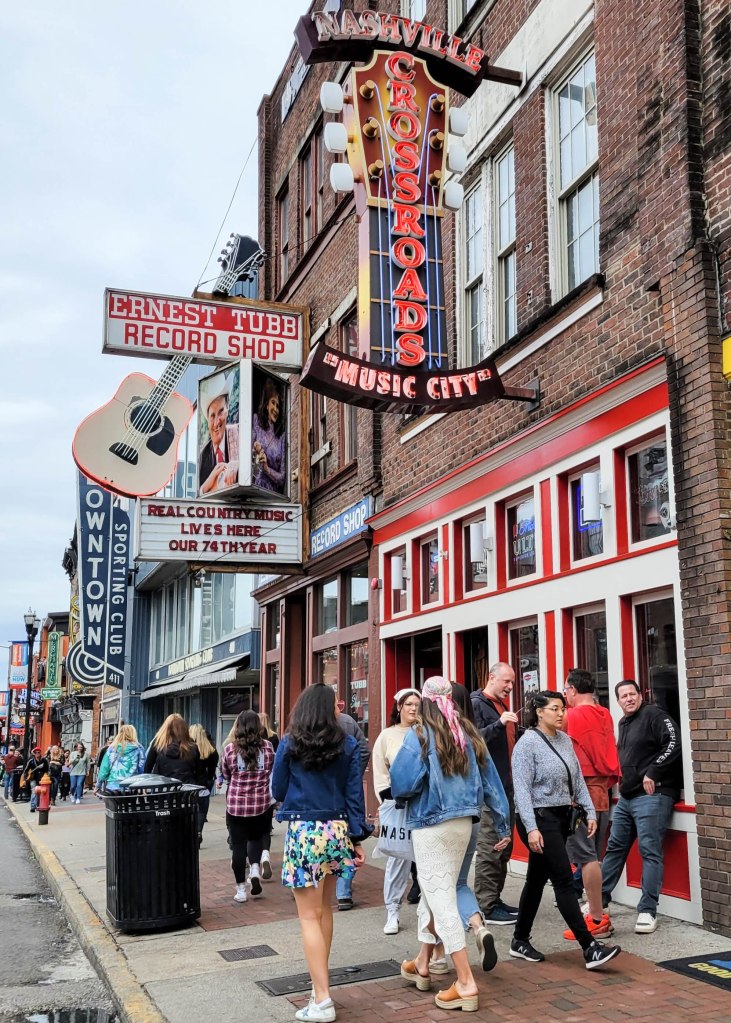




We would love to return to explore the Cumberland River walking paths, the myriad of other museums, university campuses and restaurants, and to hear some live music. Much has changed since I visited 10 years ago. If interested, check out this link from that visit to see some of the incredible architecture of this city. You will also see how much my photography has improved (thankfully!).
If you do visit, be sure to take some time to walk over the John Seigenthaler Pedestrian Bridge to capture some great views of the city. The final two images were taken from Denim restaurant on the 21st floor of The Joseph, a hotel where we might stay someday if we win the lottery 🙂





Until next time, so long Nashville!
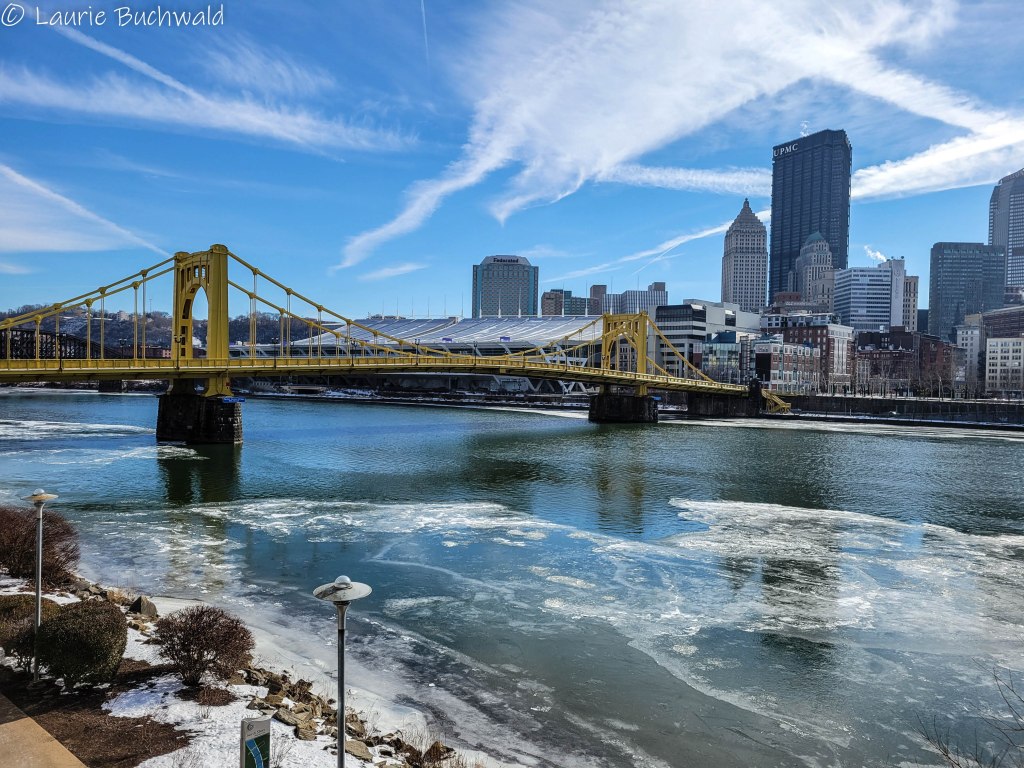
When we knew that Greg had business in Pittsburgh in January, I immediately started researching “what to do in Pittsburgh in the winter”, and wow, did I find alot! So many things in fact, that we will have to return to this wonderful city since, on this trip, we only had one day.

We woke to a temperature of 5°F but it had warmed up to a walkable 15°F by the time we set out to explore. As you can see, the Allegheny River was iced over next to the shoreline. The City of Pittsburgh has created the Three Rivers Heritage Trail which is a multi‑use riverfront trail system. The “33‑mile nonlinear trail has segments on both banks of Pittsburgh’s three rivers with access to city neighborhoods, business districts, and local attractions”. The sun was shining brightly and once my fingertips adjusted to the freezing temps, we thoroughly enjoyed our time along the river.




Once we got back to the North side of the Allegheny, we enjoyed public art, a greenspace called Magnolia Park with gorgeous blooms contrasting with the snow on the ground, and a frozen fountain.


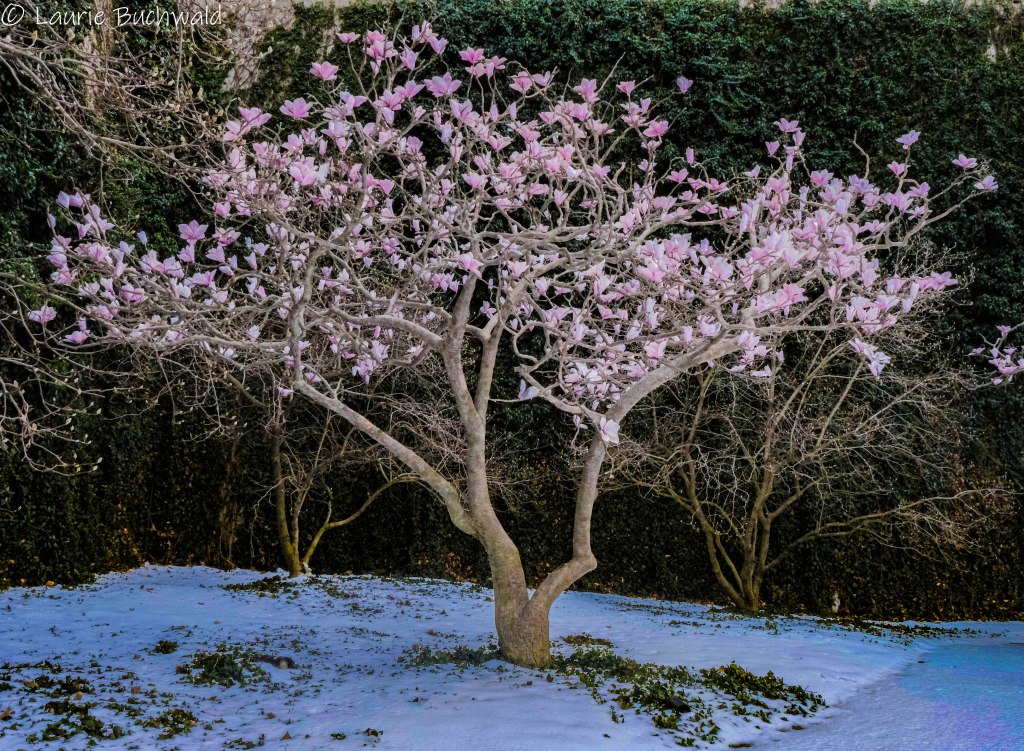


We also explored the outside of The Pennsylvanian which was constructed in 1900 for use as Pittsburgh’s Union Station. The website explains that “The Pennsylvanian is considered one of the city’s most architecturally significant buildings. The handcrafted, dome-shaped rotunda at its entrance – encapsulating the vision of Chicago architect Daniel Burnham – serves as a prominent symbol for Pittsburgh. The New Yorker art critic Brendan Gill proclaimed the building as “one of the great pieces of Beaux-Arts architecture in America”. The building is now a wedding venue and private apartments, so we were not able to explore the inside.

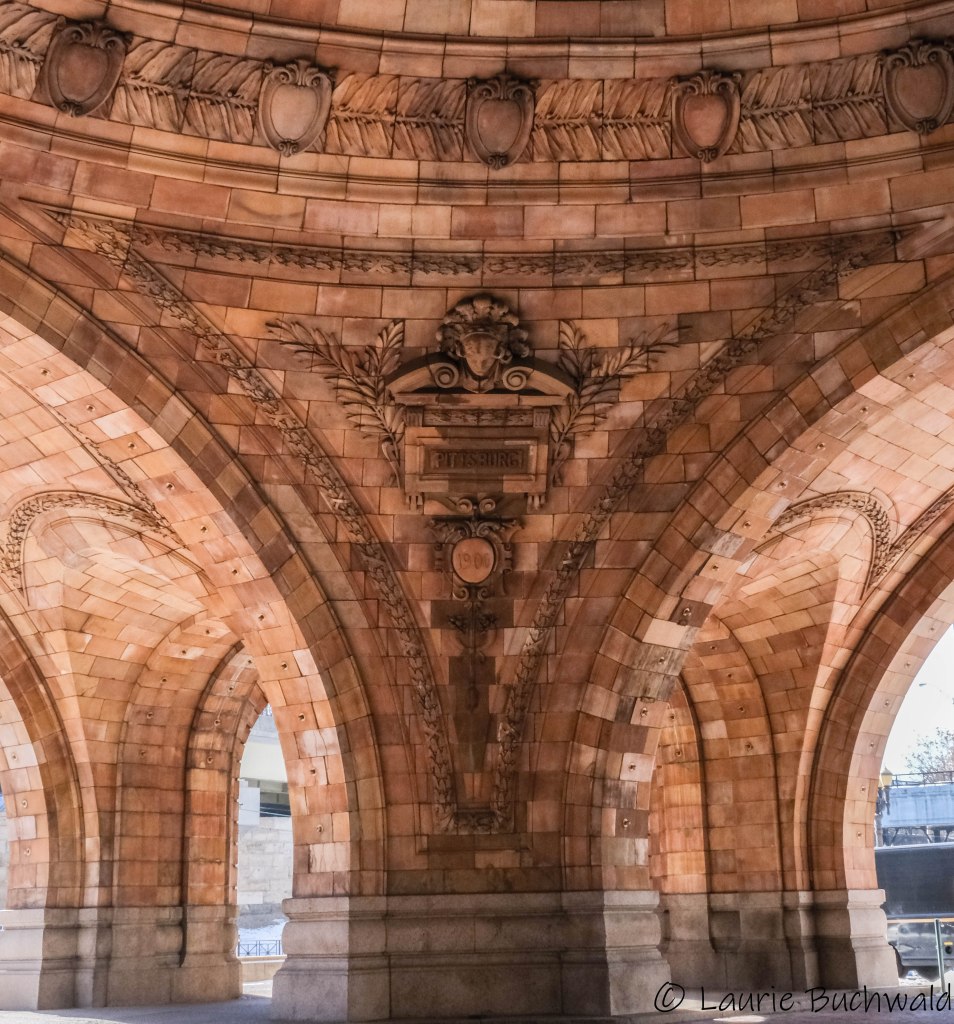



After all of this time outside in the really fresh, really cold air, we warmed up in a local brick oven restaurant with tap room. We were seated right by the brick oven which was the perfect antidote for freezing temps.


Pittsburgh has many museums to choose from and we chose The Clemente Museum. Our guide was a fabulous story teller, and while Greg, the baseball fan, already knew the story of Roberto Clemente, I was inspired by his humanitarian efforts and bravery in the face of racism. I highly recommend a visit to this museum which is located in the former Engine House No. 25, built in 1896, and located in the Lawrenceville section of the city.


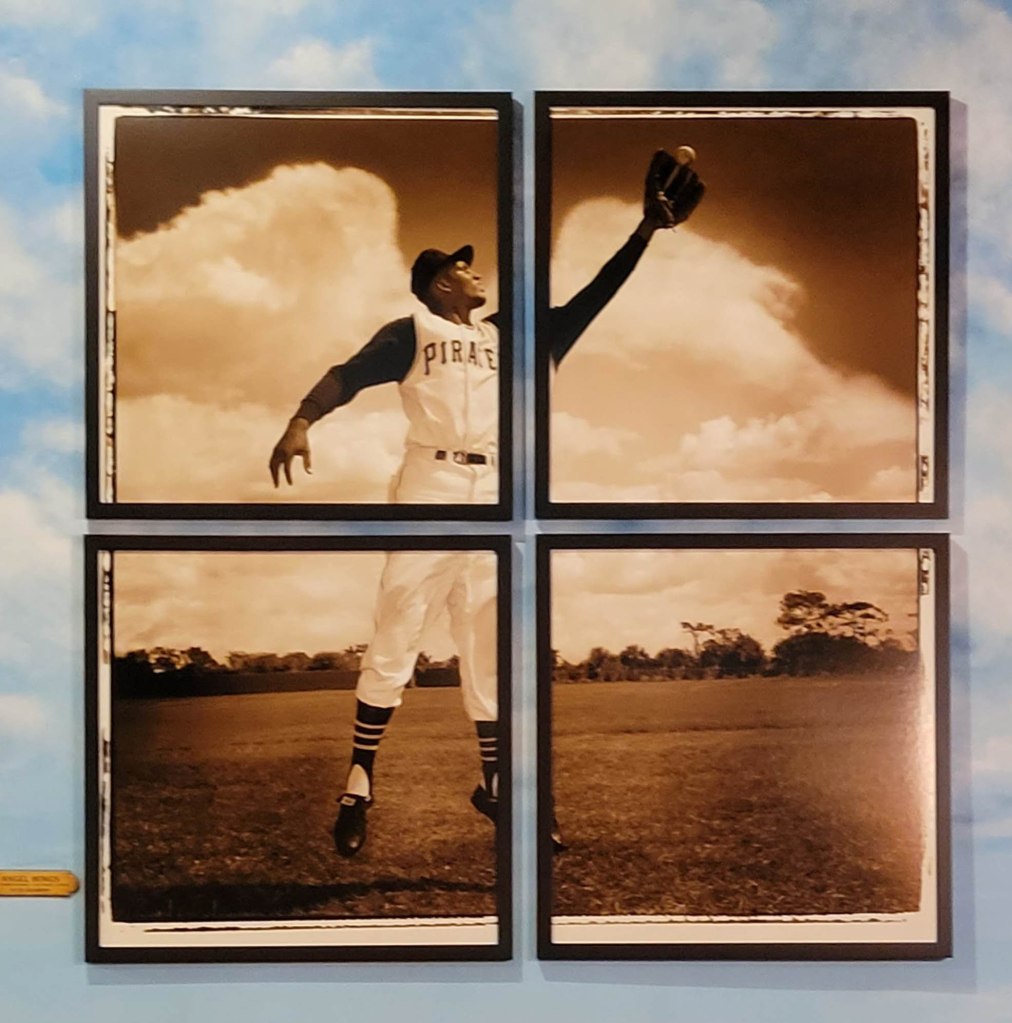


After our tour, we walked over to the 11th Hour Brewing Company to quench our thirst. Pittsburgh is such a walkable city! My friend Ruth and I visited several years ago for a Virginia Tech / Pitt football game and we walked and explored for hours.
We ended the day with an incredibly delicious dinner at Casbah Mediterranean Kitchen and Wine Bar afterwhich we drove to the top of the Monogahela Incline for a nightime view of the city scape.
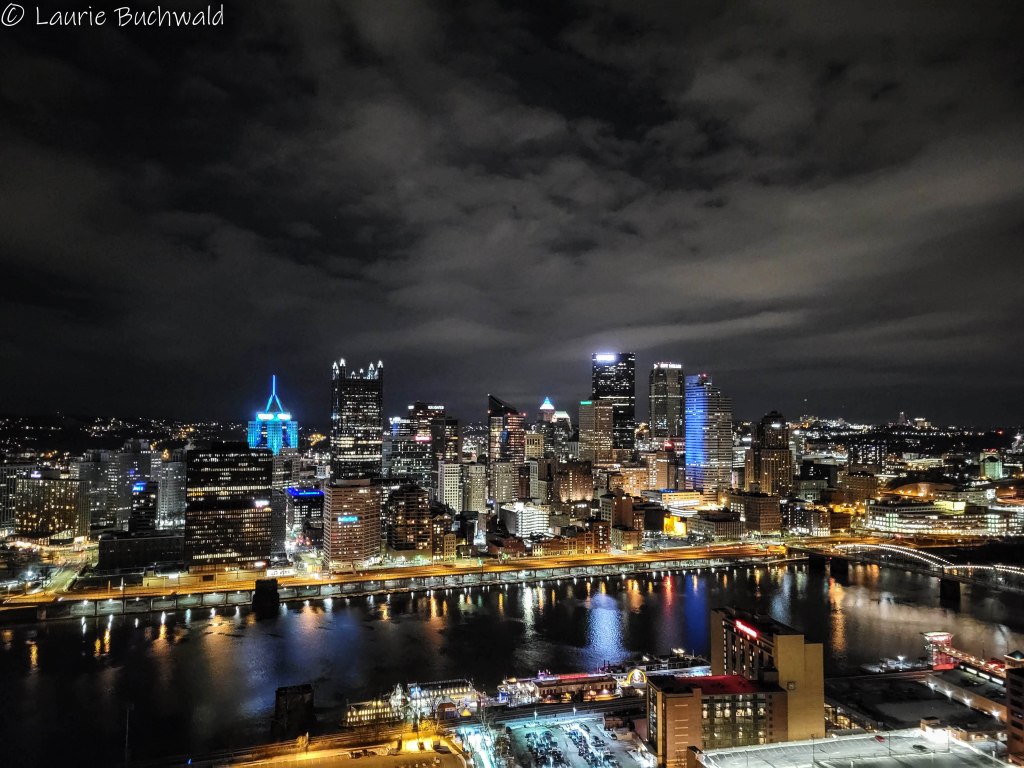
It was a jam packed 36 hours in this wonderful city, and we cannot wait to return!
Colonial Williamsburg (CW) is a popular vacation and holiday destination, yet we are often in Williamburg, Virginia to visit my parents who retired there over 30 years ago. With the moniker of “the world’s largest living history museum”, CW comprises approximately 301 acres featuring “iconic sites, working tradespeople, historic taverns, and two world-class art museums”. Colonial Williamsburg’s Historic Area houses restored and historically preserved buildings, 88 of which are originals, including Bruton Parish Episcopal Church. The church was established in 1674 by the consolidation of two previous parishes in the Virginia Colony, and remains an active Episcopal parish.
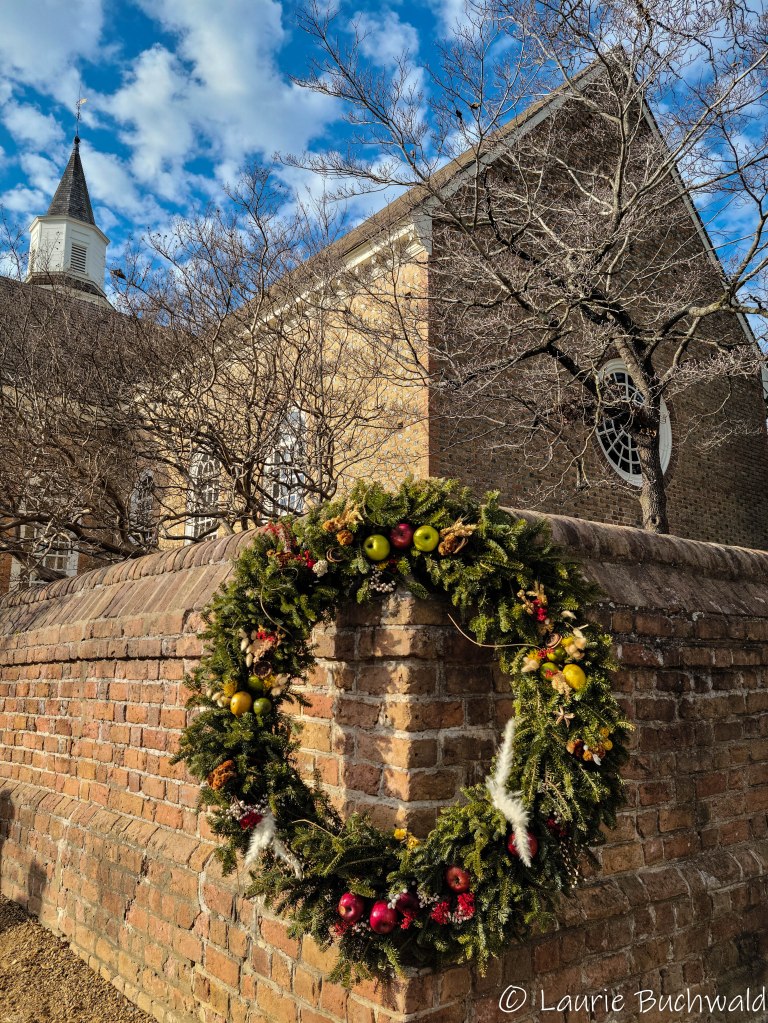
While our primary purpose of visiting is to see and enjoy family, Christmas Day found us walking the streets of CW, a safe, outdoor activity in these days of Covid.
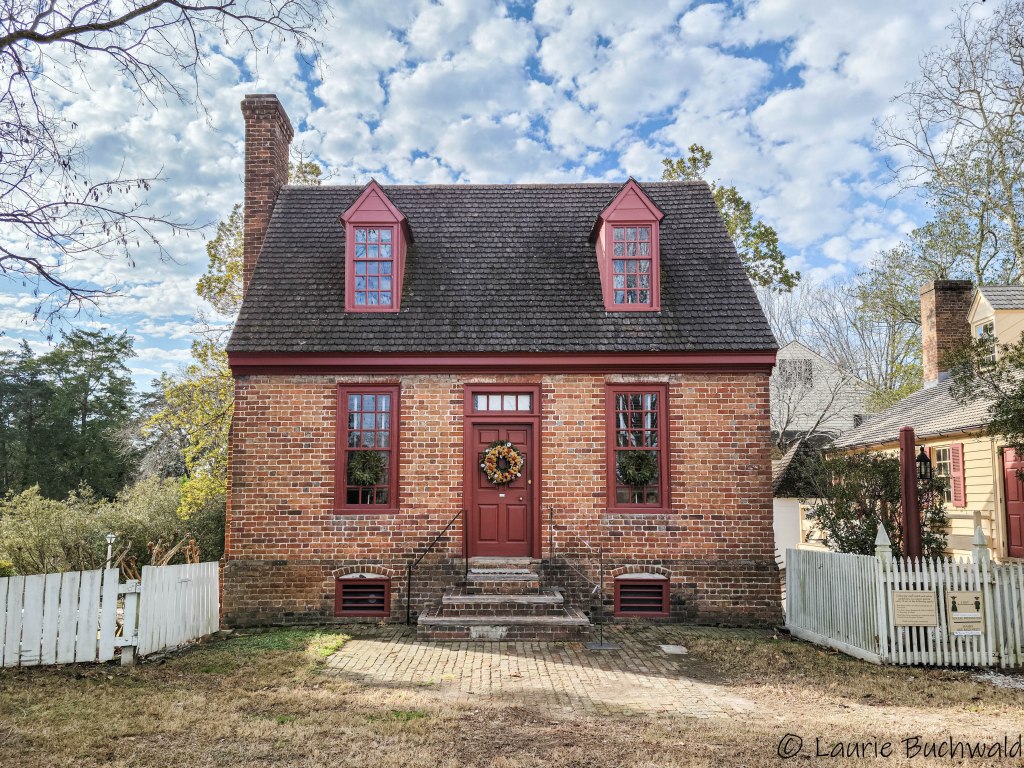


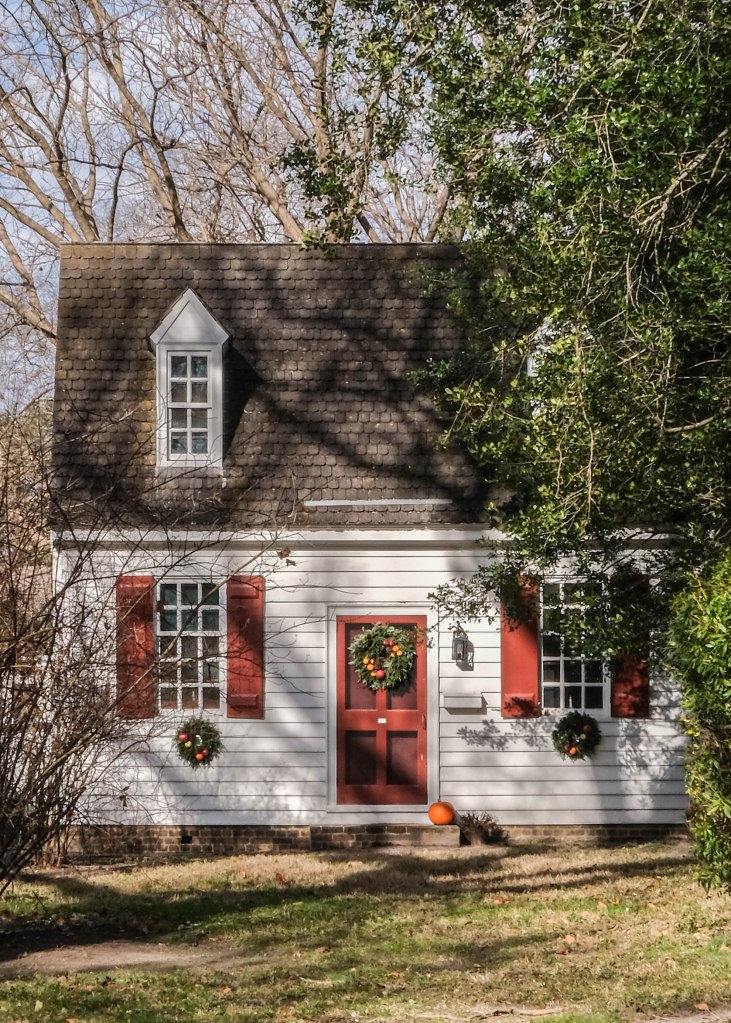
One of my favorite things to see are the wreaths that adorn the doors. Each year, Colonial Williamsburg holds a wreath making contest. Wreaths are judged on the types of natural materials used, the creativity and elements of the design, and the originality and faithfulness to the spirit of eighteenth-century decorative ideas. I didn’t have a chance to see all of the wreaths while there, but I did capture of a few of my favorites created with turtle shells, eggs, peacock feathers, oyster shells, pinecones, artichokes, pomegranates, and other natural items



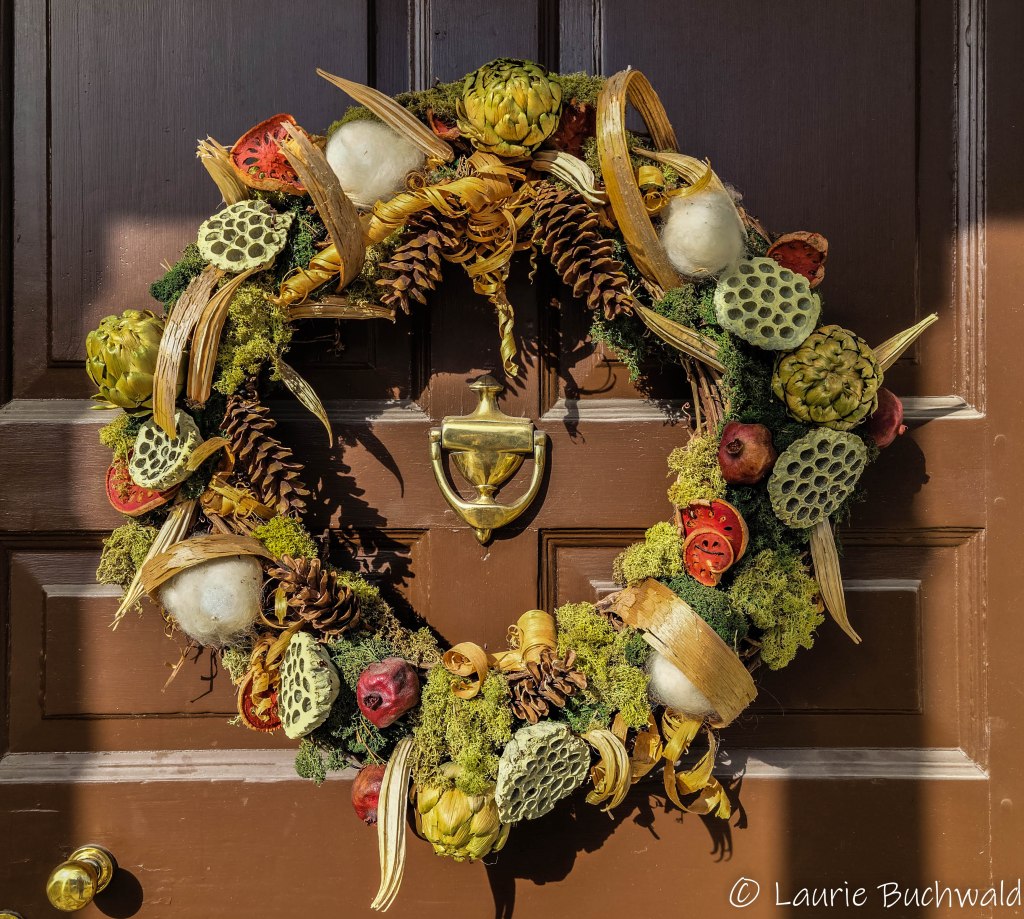
Aren’t they just so creative and beautiful? As always, if you are ever in the Williamsburg area over the holiday season, be sure to plan to take a tour.
My very first blog post was in 2012 and I posted regularly until late in 2018 when somehow the fullness of life and work kept getting in the way. Back when I began, the goal was to “be able to look back on my life later and remember what a fabulous one it has been”, and by fabulous I mean truly fortunate. I intended to have Life on the Bike be a journal, of photos and words.
Each year, I create a desk calendar for family, friends, and personal use, and when exchanging the 2021 calendar for 2022, I noted one thing for sure. While my eye may be the same, my technical capability has markedly improved. Even still, it was fun to go back and view the years through my lens, and that is what I want this space to be. A record of travel and personal growth. Thoughts, introspection, and life’s journey. In order to make that happen, I need to commit to blogging more regularly!

Since 2012, I have published 738 posts, yet this past year I posted just 24 times, only 3.2% of the total posts. What should my commitment be? Weekly? Two Times Monthly? Only when I travel? How do you all commit yourself to documenting your lives?
In the meantime, from my hometown to yours, Welcome to 2022! May it be a healthier, more hopeful year for all of us!


Long before becoming the third largest city in North Carolina, Greensboro was known for being the largest denim maker in the world. As Greg and I walked around the city last weekend, we saw many signs of this denim history. As I stopped to capture this mural, the driver of the car that was idling right in front backed up so I could take the shot. How very cool! And how perfect that the guy leaning against the fence was wearing jeans. We stayed at Hotel Denim and would have eaten at Blue Denim restaurant if the tables had not been booked all evening.

To commemorate Greensboro’s rich history with the denim and textile industry, Wrangler, VF Jeanswear spearheaded a public art project, dubbed “Jeansboro”, of painted jeans sculptures all throughout downtown.

Greensboro is also called Gate City because by 1890 there were more than 60 trains passing through the city each day. It had become a major transportation center, largely because of the denim industry.

We enjoyed the street life, the historic buildings still in use, and visiting the International Civil Rights Center and Museum.

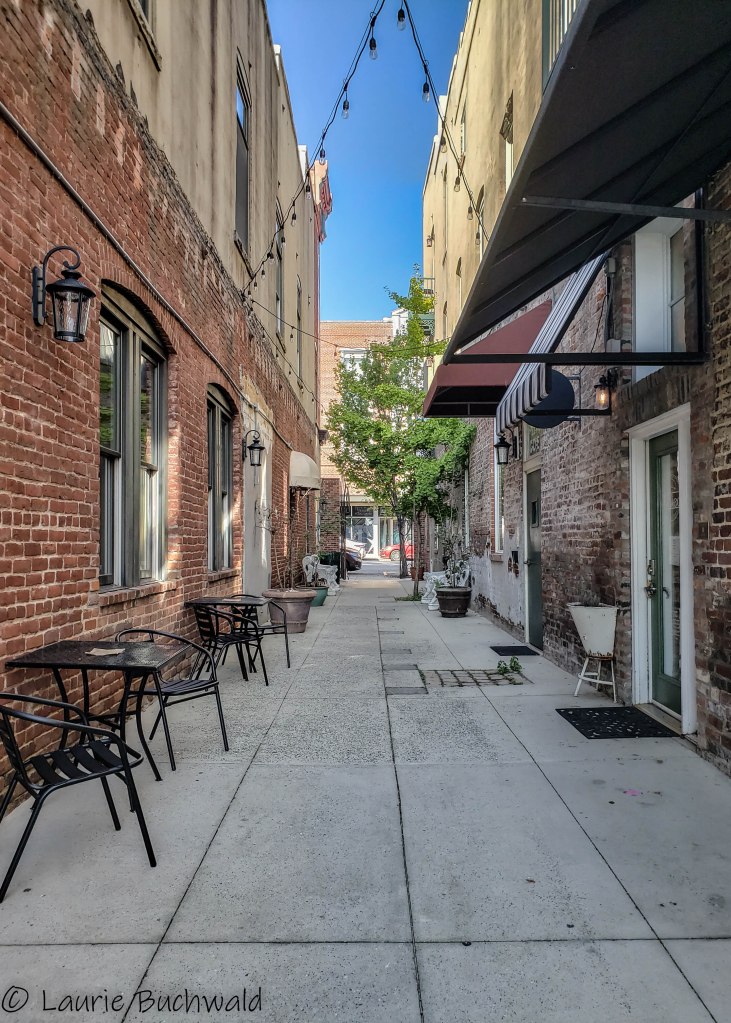
“The International Civil Rights Center & Museum opened in 2010 as a comprehensive museum of the Civil Rights Movement in the United States. It commemorates the Feb. 1, 1960, beginning of sit-ins at a whites-only lunch counter in Greensboro, by the N.C. A&T Four college students, reflecting careful planning carried out with colleagues at Bennett College. Their non-violent direct action challenged the American People to make good on promises of personal equality and civic inclusion enunciated in the Constitution”.

Did you know that MLK was due to be in Greensboro the day that he was assassinated? He canceled his visit in order to remain in Memphis to continue his work with striking sanitation workers.
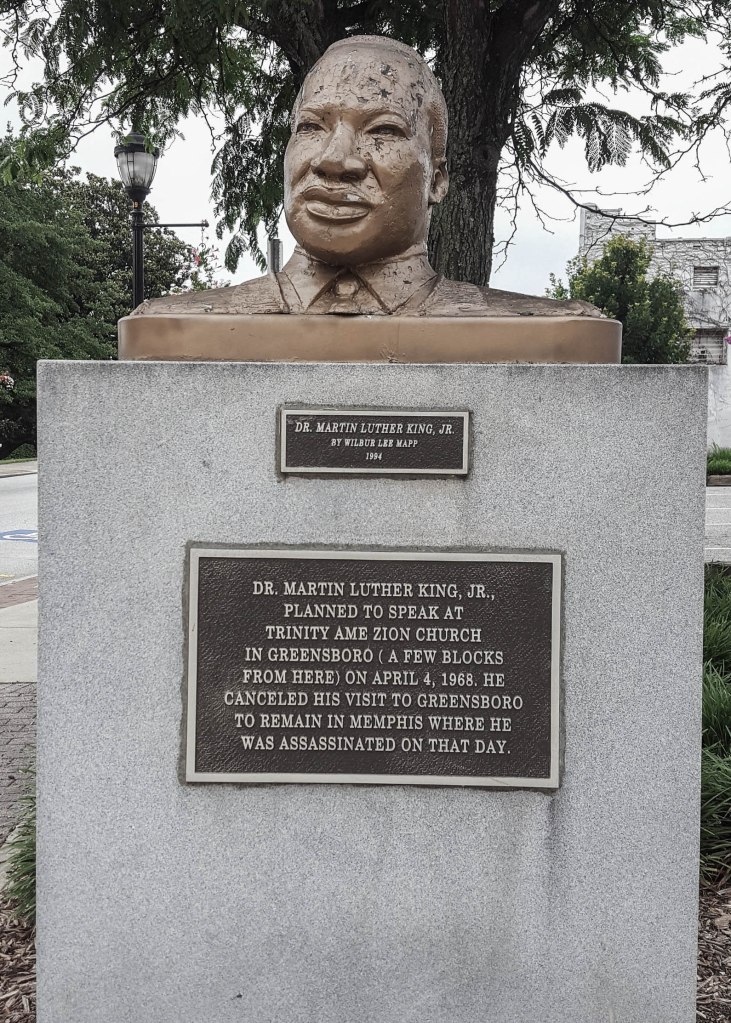
We only had 24 hours in Greensboro and are already ready to go back and explore some more!
Twenty-nine years ago, four women met while attending the Medical College of Virginia in Richmond, Virginia. Friendships were born during the challenges of graduate school and the process of becoming Nurse Practitioners, and a few times each year, we gather to celebrate our great good fortune in having met. We’ve been together through celebration and devastation, and have shared many a meal, a beverage, and lots and lots of laughter.

We call ourselves the Girls of August – the GOAs – (we WERE girls when we met) because during the first week of August we spend the week together. The only requirement to the location is that there must be water, whether it be ocean, bay, river, lake, or puddle. This year we stayed in a small rural location on the Eastern Shore of Maryland.
A hurricane, a surgery, and Covid derailed the 2020 gathering, so this year’s vacation was a gift. A gift of time, friendship, the natural world, minimalism (no TV, no nearby stores), good food and drink, and wonderful friends.







Taylor’s Island proved to be the perfect place for those looking for a break from traffic, TV, and the fear of Covid. It was also the perfect place for the GOAs.

Cheers!
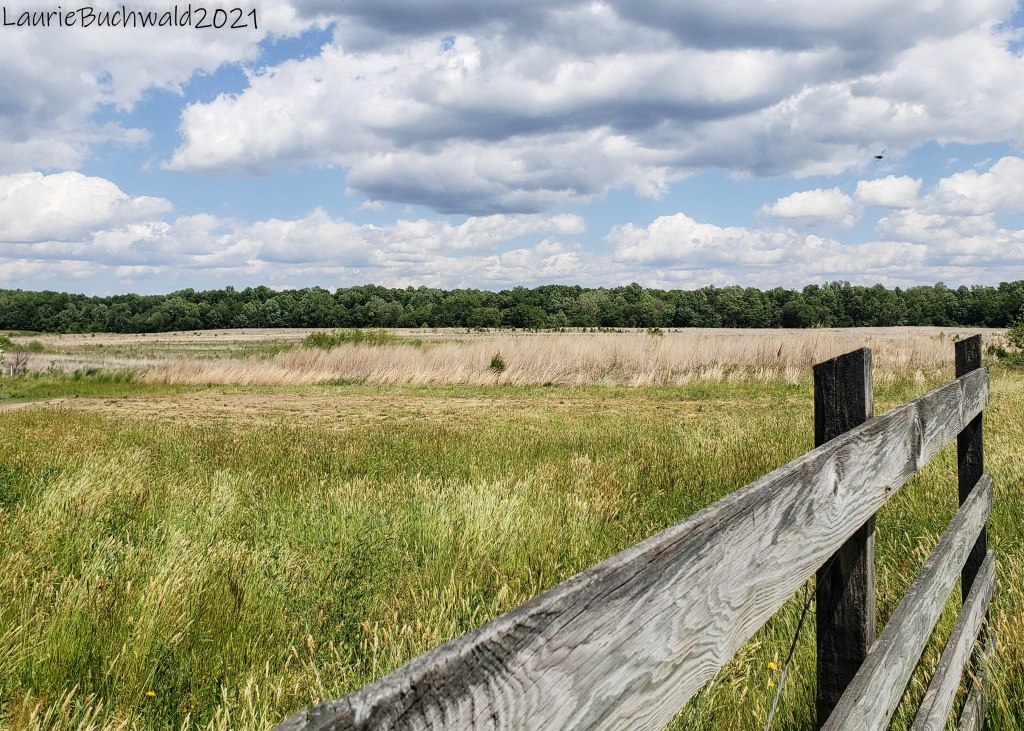
Along the road in Charles City, Virginia